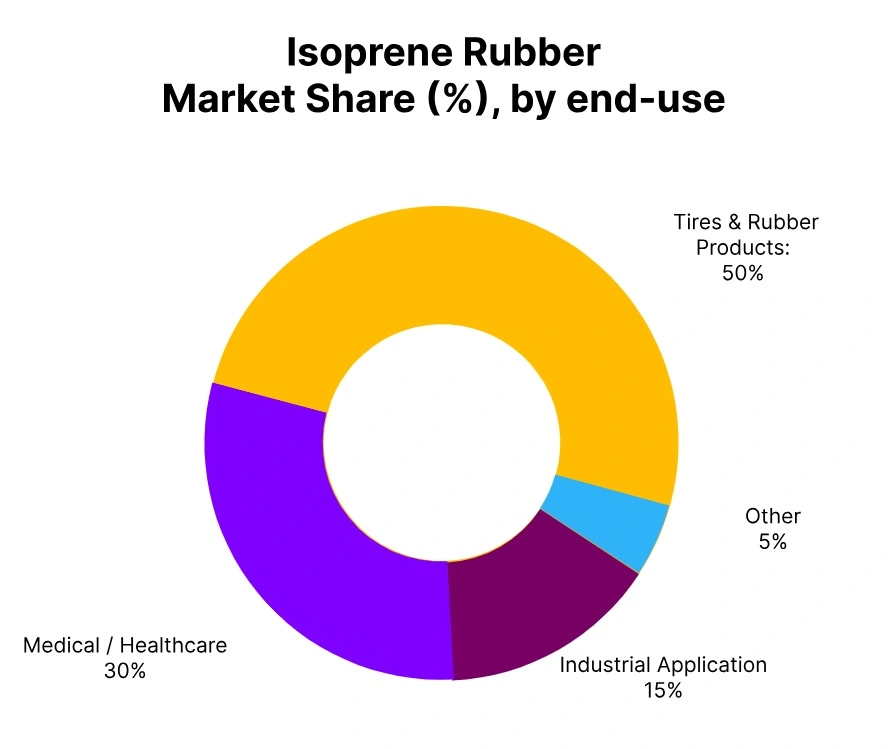Price-Watch’s most active coverage of Isoprene Rubber price assessment:
- MV (65-74) FOB Novorossiysk, Russia
- MV (82) FOB Tokyo, Japan
- MV (65-74) CIF Nhava Sheva (Russia), India
- MV (65-74) Ex-Mumbai, India
- MV (82) CIF Laem Chabang (Japan), Thailand
- MV (82) CIF Genoa (Japan), Italy
Isoprene Rubber Price Trend Q3 2025
The global Isoprene Rubber price trend in Q3 2025 showed moderate growth, with a 1–2% market change across key regions. In the APAC region, countries such as China, India, and Japan witnessed steady demand from the automotive and industrial sectors, particularly in tire manufacturing and mechanical rubber goods, supporting slight price increases.
This growth Showed mainly driven by stable consumption in downstream industries and balanced regional supply. North America observed a relatively stable market, with prices showing mild improvement due to consistent demand from automotive and adhesive applications.
In Europe, the market remained steady, though some pressure persisted from fluctuating feedstock costs and moderate trading activity. Overall, the Isoprene Rubber (IR) market in Q3 2025 remained stable and resilient, with raw material trends and regional supply-demand dynamics continuing to shape global pricing movements.
Russia
Isoprene Rubber Export prices FOB Novorossiysk, Russia, Grade- MV (65-74).
In Q3 2025, Isoprene Rubber price trend in Russia showed a downward trajectory, with an overall 2.06% decrease FOB Novorossiysk. The Isoprene Rubber price trend in Russia weakened due to lower demand from the automotive and industrial sectors, particularly in tire and mechanical rubber goods production. Plenty of domestic supply and tepid export activity placed downward pressure on prices during the quarter.
Isoprene rubber prices in Russia fell by approximately 2.5% in September 2025 versus the preceding month, driven by thin trading and prudent downstream buying. The trend of Isoprene Rubber prices in Russia is likely to stay weak in the near term on the back of middling demand and firm feedstock availability.
Japan
Isoprene Rubber Export prices FOB Tokyo, Japan, Grade- MV (82).
According to the Price-Watch, in Q3 2025, isoprene rubber price trend in Japan declined by 3.8%. The Isoprene Rubber price trend in Japan weakened due to sluggish demand from the automotive and industrial manufacturing sectors, particularly in tire and rubber goods production. Adequate availability and negligible downstream action put downward pressure on market sentiment in the quarter.
In September 2025, Isoprene rubber prices in Japan fell by approximately 3.7% from the preceding month due to prudent procurement and lower export business. The trend of Isoprene Rubber prices in Japan is likely to remain under gentle pressure in the short term with stable feedstock prices and moderate recovery of demand.
India
Isoprene Rubber import price CIF Nhava Sheva (Russia), India, Grade- MV (65-74).
According to the Price-Watch, in Q3 2025, Isoprene Rubber import prices in India decreased by 0.3%. The Isoprene Rubber price trend in India weakened marginally because of decent demand from industries and auto sectors, coupled with sufficient supply from Russian sellers. Comfortable feedstock prices and conservative buying behavior among downstream manufacturers helped the modest quarterly drop.
In September 2025, Isoprene rubber prices in India fell by approximately 1.8% versus the prior month, driven by lower import volumes and lack of spot trading. The Isoprene Rubber price trend for India will be stable with gentle downward pressure in the next quarter.
Thailand
Isoprene Rubber import price in CIF Laem Chabang (Japan), Thailand, Grade- MV (82).
In Q3 2025, the prices of Isoprene Rubber in Thailand fell by 3.7%, as there was a weak demand scenario from the auto and industrial manufacturing industries. The Isoprene Rubber price trend in Thailand was under pressure due to ample domestic supply and weaker export activity, notably to key regional destinations. Lower tire manufacturing and tempered buying by downstream makers also added to the quarterly slide.
In September 2025, the price of Isoprene rubber in Thailand declined by approximately 3.6% compared to the previous month as the market sentiment remained subdued with stable feedstock supply. The Thai Isoprene Rubber price trend is forecasted to continue weak in the near term with only limited signs of recovery from the end-use sectors.
Italy
Isoprene Rubber import price in CIF Genoa (Japan), Italy, Grade- MV (82).
In Q3 2025, import prices of Isoprene Rubber (IR) in Italy fell 3.9%. The Isoprene Rubber price trend in Italy slowed because of poor demand from the automotive and industrial segments, especially in tire and rubber products manufacturing. Sufficient import supply from Japan and subdued downstream consumption helped drive prices down during the period.
In September 2025, Italian Isoprene rubber prices fell by approximately 4.1% from the preceding month on subdued trading and defensive buying by buyers. The trend of Isoprene Rubber prices in Italy will continue to be under muted pressure in the near term as market sentiment remains soft.





